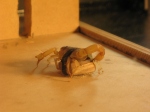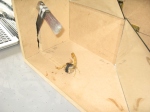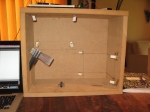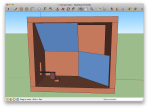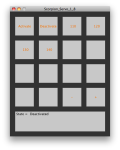Today we attempted to take the high speed video (250 fps) and encountered several problems.
First, we had to put the scorpion on ice to get it to stop moving. This works very well and does not seem to injure the scorpion, but it does take a very long time for the scorpion to warm up sufficiently to sting anything (about 30 minutes). This is a problem because the we only have access to the camera for a limited time. Second, the scorpion would not respond to the soft foam trigger with more pinching. Only irritating it with a pen on its head or back would induce a sting. And finally, we had a slight issue with camera view and depth of field. The high speed camera did not have a very wide angle so it had to be moved several feet away from the box. This caused us to lose some depth of field, but eventually we got an acceptable view.
Notes:
I have several thoughts on the issue of the scorpion not stinging. The first is that scorpions are nocturnal. This may cause them to be lethargic during the daytime. If this is the case, we may have to do the video shoot in the evening or night (from my observation in the wild, the giant desert hairy scorpion becomes active right after nightfall, or at about 9:30 during the summer). Another possible cause for the scorpion’s lack of aggression towards the foam block could be due to how it is chilled before being placed in the harness. Although, as I mentioned above, it the icing does not seem to harm them in the long term, it does seem to sap their energy right afterwards. This could possibly be some type of temperature shock. However, we have little choice in the matter as handling a live and warm giant desert hairy scorpion is quite difficult. The last, and possibly most likely reason for the scorpion not stinging the foam is that the giant desert hairy scorpion has very large pedipalps (claws). For most scorpions (not all!) the general rule is that the larger the pedipalps, the weaker the venom. This is because a scorpion with large pedipalps is able to subdue its prey with its pedipalps alone, where as a scorpion with smaller pedipalps must rely more on its venom (and example being the giant desert hairy scorpion (large pedipalps, mild venom) versus the Arizona bark scorpion (tiny pedipalps, most venomous scorpion in North America). Therefore, the reason for our giant desert hairy scorpion not stinging is because it instinctually relies more on its pedipalps than stinger (as noted above, it would pinch the foam block, but not sting it). If this is the case, we must find some means of stimulus that startles it enough to provoke a sting.








